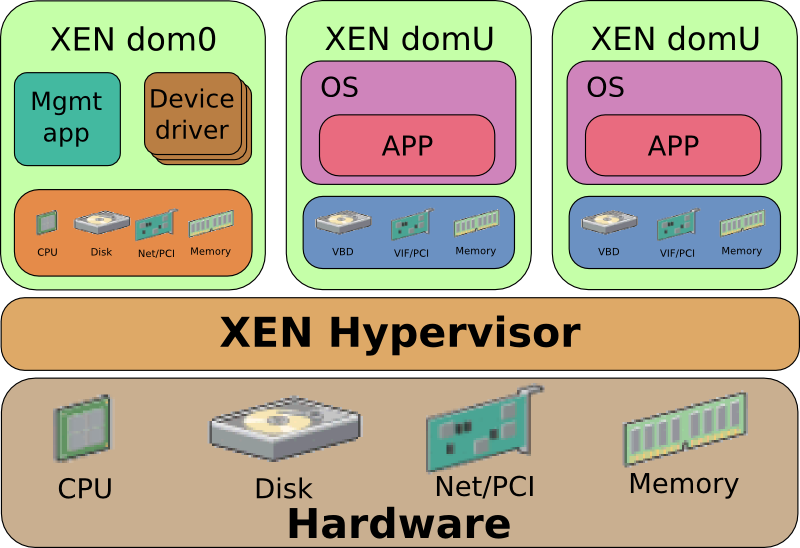Week 1, Day 2
In-class exercise
Break into pairs. Take half of the following phrases and explain it to your partner to the best of your understanding. Then switch roles, with your partner explaining the other half to you. If you have no idea what a term means, speculate.
- virtual machine
- virtualization
- provisioning
- overprovisioned
- elastic computing
- oversubscribed
- API
List the two or three words or phrases you found hardest to understand from the readings (ignoring the legal terms in Amazon’s SLA).
The Xen virtual machine (used by AWS)
Uptime and availability
Availability can be most simply defined as uptime / (uptime +
downtime). But note that customers and providers (such as Amazon)
will define “downtime” differently. This is the source of the legalese in
Amazon’s SLA (and every other cloud vendor’s SLA).
| Availability % | How much downtime is allowed per year? |
|---|---|
| 90% ("one nine") | More than a month |
| 99% ("two nines") | Less than 4 days |
| 99.9% ("three nines") | Less than 9 hours |
| 99.99% ("four nines") | Less than an hour |
| 99.999% ("five nines") | ~ 5 minutes |
| 99.9999% ("six nines") | ~ 31 seconds |
Table from Distributed systems for fun and profit, Chap. 1. A good, more extensive, discussion is at the Wikipedia page for High Availability (HA).
Reading guide for next class
Read the following before coming to the next class:
The Datacenter as a Computer, 2d. Ed., Sections 1.0–1.3, 1.5–1.6.0 (stop before 1.6.1).
Read these sections to get an idea of the overall structure of a datacenter. Every time you do a search using Google, Bing, or Yahoo, every time you tweet or update your Facebook account, the code is running on the kind of warehouse-scale computer described here. This book was written by three engineers who have designed data centers for Google.
After this reading, we will focus on software for the rest of the course.
Things to look for:
- What is a warehouse-scale computer?
- How does warehouse scale make it different from laptops or desktops?
- Why does understanding this matter?
The Datacenter as a Computer, 2d. Ed., Sections 2.0–2.1, skim 2.2.
Read these sections to gain an overview of the software that forms the cloud. We’ll spend most of the course thinking about this topic.
Things to look for:
- What distinguishes Platform-level, Cluster-level, and Application-level software?
- What makes Internet-scale software different from the software on your desktop?
Familiarize yourself with the list of concepts in Section 2.2 but don’t expect to memorize it. We’ll be covering many of these concepts in great detail during the course.
